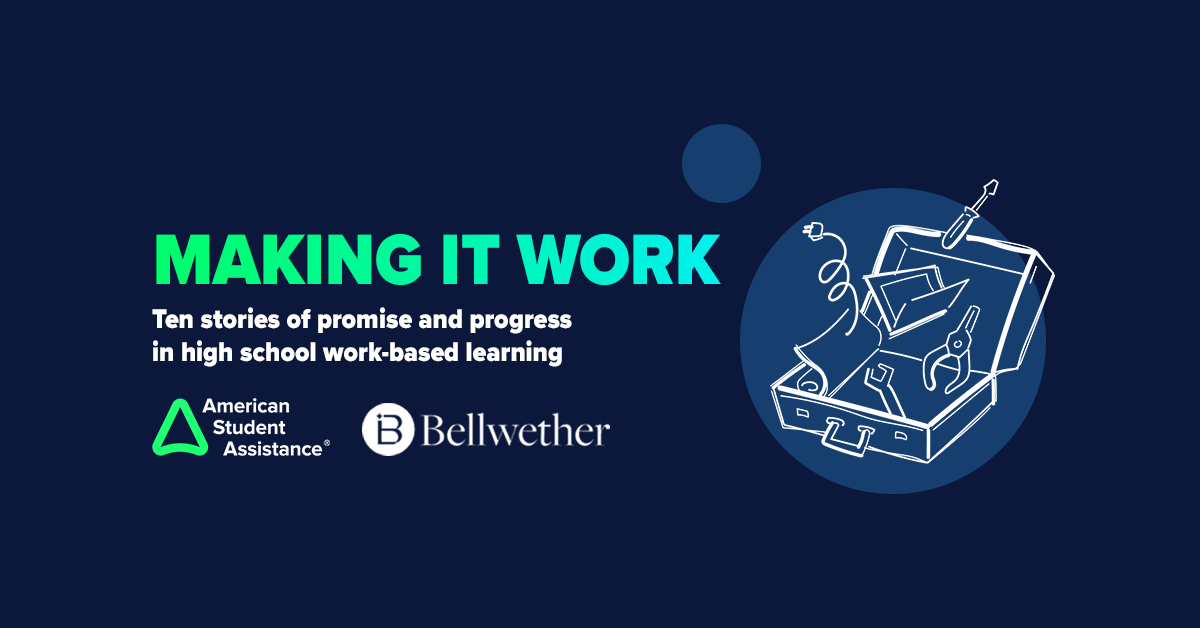Work-based learning opportunities, such as apprenticeships, internships, and co-ops, are proven to help students gain not only real-world experience but a sense of whether or not a particular career field is something they want to pursue.
Research shows that 79% of high school students say they’re interested in a work-based learning experience, but only 2% have completed one. If we want to improve the future prospects of young people and the workforce at-large, it’s imperative that we start introducing work-based experiences earlier on in kids’ education journeys.
That’s just what was discussed in a panel earlier this year at the LearnLaunch Fenway Innovation Summit, moderated by ASA’s SVP of Advocacy and Corporate Social Responsibility, Julie Lammers. Julie was joined by Pam Gordon, Internship Programs and ImBlaze Implementation Coach at Big Picture Learning; Nina Pande, Executive Director at Skills for Rhode Island’s Future; Letta Neely Associate, Director of Programs at Apprentice Learning; and Bob LePage, Assistant Secretary for Career Education for the Commonwealth of Massachusetts.
Here are our key takeaways:
- Work-based learning experiences in high school can help to shape a young person’s career trajectory — and can be a boon for workforce development as well.
When most hear the word “internship,” they think college — but work-based learning in high school can set young people up for success by immersing them in a hands-on environment before the added pressures of adulthood set in. This allows students to head into their postsecondary path with greater confidence and knowledge.
As Julie explained: Work-based learning “helps kids to build a workplace identity, build social capital, and build interpersonal skills that we know they need to succeed.” At the same time, she noted, businesses are also struggling to cultivate a pipeline of talent, so there is profound mutual benefit to engaging high school students in these experiences.
2. There are logistical barriers to implementing work-based learning experiences for K-12 students, and we must find innovative solutions to mitigate them.
Pam from BPL explained that in her experience working with high school students, implementation of these programs is often a challenge due to a number of factors.
For one, on the employer side, it can be a tough sell due to potential liability issues: “You walk into a business with a 16-year-old and the business says, ‘well, we can’t do that,’” she continued. So, there has to be a greater effort to educate employers on the value of hiring high school interns and reassuring them that any potential liability issues are covered.
Furthermore, managing the logistics of students’ internship experiences can be difficult — but thankfully, BPL has a platform called ImBlaze that allows the adults overseeing these experiences to ensure that students are getting to and from their internship and allows them to also track their progress.
Solutions like these are exactly what’s needed to combat uncertainty on both the student and business sides of the equation. ImBlaze is a promising platform that can help to both manage and scale work-based learning experiences.
At Skills for Rhode Island’s Future, Nina and her team mitigate these barriers by handling all of the logistics for employers, from worker’s compensation to wage funding. This helps to alleviate hesitancy for businesses to hire high school interns.
There are also challenges that arise from transportation availability that must be addressed. Letta from Apprentice Learning explained that her organization always makes sure that businesses they work with are located within 20 minutes of public transportation so that kids can have equitable opportunities.
3. When it comes to career readiness learning, it’s important to equip young people with all the skills they need – including “soft” skills – that are rooted in relationship-building between students and employers.
While the objective of career readiness education is to teach young people in-demand job skills, it’s equally important to make sure they’re able to hone their “soft” skills — or, as Letta describes them, “essential” skills.
When Letta is working with young people – who are primarily Black and brown, and as young as eighth grade — she starts by focusing on professional comportment. Skills like hand-shaking in different environments, recognizing unique learning styles (“can you tell someone if you’re a visual learner or kinesthetic? Can you tell them if you’re an auditory learner?”), and acknowledging signature strengths that differentiate them from others in their workplace.
This is also true on the employer side. Letta pointed out how something so seemingly simple as name pronunciation can impact a student’s experience in a work-based learning environment, and there is a degree of cultural competency required from business leaders — particularly when it comes to working with students from varied backgrounds.
4. When looking at work-based learning from a policy perspective, the most important — and most challenging — aspect is scalability.
Asst. Secretary Bob LePage described efforts in Massachusetts to expand work-based learning opportunities, an initiative called Innovation Pathways, saying they focused on first creating intentional pathways for students, prioritizing those in underserved communities.
It’s crucial to look into all available options and tap into a variety of resources to scale work-based learning initiatives across the commonwealth, from federally funded YouthWorks organizations, coaching and mentoring organizations, investing in STEM internships for high school students to close equity gaps, and more.
Another important consideration is compensation. Bob described an effort by the commonwealth to fund stipends for high school students participating in work-based learning.
5. Equity must be a top priority with any work-based learning initiative.
Ensuring an equitable approach to work-based learning opportunities — one that includes and prioritizes those who don’t have as many resources, including social capital — is essential to building and empowering the workforce of the future.
Nina said that for her organization, it’s about accountability and advocacy, and never wavering from the push to get funding and resources for the most successful experiences possible. She explained that it’s also imperative to start the process early on in students’ K-12 education journeys, so that kids feel confident heading into these experiences.
“Equity is a long game,” Letta said, and it’s a goal that we have not yet reached. She went on to explain how critical it is that we don’t look upon underserved students as “deficit-based”; that is, we must stop looking at what they don’t have and instead build on what they do have. This requires us to also look inward at what we, as adults, haven’t done to make sure students feel positively included.
Thank you for reading! You can check out the full panel discussion here. For more on the future of career readiness learning, subscribe to our thought leadership newsletter, PivotED.





